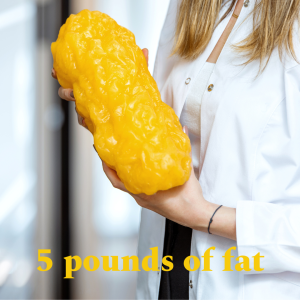
The Unhealthy Truth About My Coffee: How Your Favorite Cup Might Be Sabotaging Your Fitness Goals
The Unhealthy Truth About My Coffee: How Your Favorite Cup Might Be Sabotaging Your Fitness Goals
Unraveling the Caloric and Sweet Secrets Hiding in Your Daily Brew

Welcome, health-conscious readers, to BP Training and Coaching! Today, we embark on a journey to uncover the truth about a seemingly innocent indulgence – my delicious coffee. As someone who is dedicated to health and fitness, I was shocked to discover how my daily coffee concoction could be impacting my weight loss and overall well-being. In this blog post, we will delve into the specific ingredients of my coffee, the calorie and sugar content of each additive, and the potential consequences on my fitness goals. I’ll also share some practical tips to make smarter choices and align your coffee routine with your health objectives.
Unveiling My Coffee Concoction:
Picture this: every morning, I revel in a steaming cup of coffee that is blended to perfection. The recipe includes 1/4 cup of homemade almond milk, a tablespoon of honey, two tablespoons of salted caramel syrup, three tablespoons of chocolate creamer, and two tablespoons of coconut oil. A dollop of whipped cream and a sprinkle of Himalayan sea salt add the final touch. Undeniably delightful, but what I didn’t realize was how this flavorful medley could be concealing hidden health hazards.
Counting the Calories and Sugar:
Let’s break down the nutritional value of each additive to understand the impact on my coffee’s overall calorie and sugar content:
- Homemade almond milk: It may seem like a healthy alternative, but it still contributes 7.5 calories to my coffee, and luckily, it contains no sugar.
- Honey: Known for its natural sweetness, a tablespoon of honey packs a surprising 64 calories and a substantial 17 grams of sugar.
- Salted Caramel Syrup: This indulgent flavoring adds a whopping 100 calories and a staggering 24 grams of sugar per serving.
- Chocolate Creamer: The beloved creamer adds 105 calories to my coffee and an additional 15 grams of sugar.
- Coconut Oil: While considered a trendy addition to coffee, the two tablespoons of coconut oil contribute a hefty 234 calories, though it contains no sugar.
- Whipped Cream: The finishing touch, whipped cream, adds a modest 15 calories and 1 gram of sugar.
Summing up these ingredients, my seemingly innocent cup of coffee totals a shocking 525.5 calories and 57 grams of sugar per serving! Can you believe it? This means that my daily coffee indulgence alone is responsible for a significant caloric and sugar intake, which could sabotage my fitness progress.
The Impact on Your Goals:
Now that we understand the nutritional breakdown, let’s consider the larger picture. I enjoy this coffee concoction daily, so the monthly numbers are even more eye-opening. Over the course of a month, my coffee addiction translates to a staggering 16,027.75 calories and 1,738.5 grams of sugar! In terms of weight gain, this amounts to an additional 4.58 pounds of fat and an astonishing 3.88 pounds of sugar intake per month. Yikes! I had never given much thought to how my daily coffee habit could contribute to my fitness struggles until now.
Making Informed Choices:
Armed with this newfound knowledge, it’s time to make smarter choices about my beloved coffee. If you’re also on a journey to a healthier you, consider the following practical tips to revamp your coffee routine:
1. Swap the Sweeteners:
Instead of high-calorie sweeteners like honey and caramel syrup, opt for natural alternatives like stevia or a small amount of pure maple syrup. These options add sweetness without the extra calories and sugar.
2. Lighten Up the Creamer:
Trade the calorie-laden chocolate creamer for a splash of unsweetened almond milk or low-fat milk. You’ll still get the creamy texture without the added sugars.
3. Use Natural Flavorings:
Experiment with adding a sprinkle of cinnamon or a drop of pure vanilla extract for a burst of flavor without the calories. These natural flavorings can elevate your coffee experience without the guilt.
Balancing Treats and Health Goals:
While my coffee concoction is undoubtedly a treat, I’ve come to realize the importance of moderation and mindful choices. It’s essential to strike a balance between enjoying indulgences and staying on track with your fitness goals. By being aware of the calorie and sugar content in your daily coffee routine, you can make informed decisions without depriving yourself of the joy of a flavorful cup.
Conclusion:
As we conclude our exploration into the unhealthy truth about my coffee, I encourage you to examine your coffee habits as well. Small changes in your daily routine can lead to significant long-term results in your fitness journey. Remember, knowledge is power, and being conscious of what goes into your coffee can help you stay aligned with your health objectives. Embrace healthier alternatives and remember that occasional treats are okay. Here’s to a healthier, fitter you, one coffee at a time!


Recent Comments